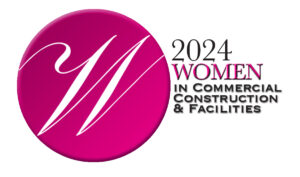How can construction companies maintain healthy cash flow while minimizing overhead costs in today’s dynamic industry? This challenge is crucial for long-term success, as firms navigate unique financial hurdles such as project-based budgeting, delayed payments, and fluctuating material costs.
Construction companies must adopt proactive cash flow management strategies to thrive in this environment. By understanding their financial processes and addressing potential bottlenecks, they can enhance cash flow and reduce overhead costs, ultimately supporting sustainable growth in a competitive marketplace.
The Current State of Construction Finance
Construction firms are more often faced with the problem of being less productive, possibly with higher operating costs due to inefficient financial management systems. Professional accountants for marketing agencies have established financial best practices, and construction companies can benefit from similar strategic approaches.
In real life, addressing inefficiencies can lead to a notable boost in worker productivity and a significant reduction in operational costs. Therefore, improving financial planning is key to discovering innovative ways to reduce overhead, all while enhancing overall efficiency and performance.
Strategic Financial Planning
Adopt Advanced Financial Forecasting Tools
Construction organizations have to be competitive in outlook, hence requiring good financial forecasting tools. These are helpful to the companies for mapping their revenue fluctuations more accurately in order to make informed decisions.
It also provides real-time tracking of cash flow from any specific projects, thereby managing financial resources. This solution helps construction companies optimize their operations and generate reliable, data-driven financial forecasts by understanding resource allocation across multiple projects.
Project-Based Budget Allocation
Project-based budgeting can be well applied to give construction firms an opportunity for better control over the cost of operations and tracking. It allows them to understand costs line by line on each project, increasing the rate of accuracy in cost tracking.
This model minimizes the risk of overruns and helps in proper resource allocation between projects, thus improving financial administration and operational efficiency.
Optimize Payment Cycles
Streamline Invoicing Processes
Automated invoicing systems will revolutionize the way you collect your payments. It saves much time in manual processing, hence freeing up more time to run the business. By reducing human errors in billing, they ensure preciseness and reliability in financial transactions.
On the other hand, automated invoicing helps to collect payments quickly. Quick payment collection is crucial for maintaining good cash flow. It offers real-time payment tracking so that any business can keep their financial status right in front of their eyes and act immediately whenever required.
Enforce Clear Payment Terms
Setting terms of payment is quintessential for a firm to ensure good cash flow. In a milestone-based schedule, one gets milestone payments throughout the progress of the work to be executed. The early payment incentive has facilitated ways through which customers are incentivized to pay in advance, hence mutual benefit to both parties.
The late payment penalty has been defined to shun delays by motivating the clients to pay on time. All these terms are written in contracts to avoid confusion and safeguard the interest of all the involved parties.
Manage Inventory and Procurement Costs
Just-In-Time (JIT) Inventory Management
- Minimizes warehouse space requirements by reducing excess stock.
- Reduces material wastage by ensuring materials are only ordered as needed.
- Lowers insurance costs associated with maintaining large inventories.
- Improves cash flow by reducing tied-up capital in unsold inventory.
Supplier Contract Optimization
- Enhances negotiation terms to achieve better pricing and delivery conditions.
- Establishes clear performance metrics to evaluate supplier reliability.
- Facilitates stronger relationships with suppliers for improved collaboration.
- Enables flexibility in contract terms to adapt to changing business needs.
Enhance Labor Management Practices
Workforce Management Tools
Digital workforce management solutions offer quantifiable benefits. They can assure substantial gains in productivity and simultaneously reduce overtime costs. These tools allow for better resource allocation and improved project scheduling, thereby allowing teams to work in a far more productive and efficient manner.
Cross-Training Programs
Effective cross-training can yield numerous benefits. Cross-training potentially reduces specialized labor costs and may minimize delays in certain projects. The practice of cross-training also develops flexibility within the workforce and enhances team capabilities for varied demands and challenges that may affect an organization.
Implement Cost-Control Mechanisms
Regular Cost Audits
Conducting regular cost audits assists in ascertaining many financial inefficiencies within an organization. Such audits will be in a position to show many dispensable costs, waste of resources, and others on which the organization is spending money, and such costs can be reduced. This also reveals potential process improvements that can positively impact the financial bottom line.
Evaluate Overhead Expenses
The main areas of reduction given priority by the overhead cost evaluation are varied. The key area is space optimization, wherein the office workspace utilization is taken into consideration. The other crucial area is utility costs, which can be minimized to reduce energy and water expenses.
Additionally, timely equipment maintenance can prevent costly breakdowns, which are costly. In addition, smoothing administrative procedures can result in major savings for overheads.
Improve Contract Negotiations
Cost Escalation Clauses
The cost escalation clauses in the contract will protect your profit margins against unexpected increases in prices. Material price fluctuations, labor costs, and equipment costs can be spelled out clearly in the contract for cost adjustments.
Material price variations, labor cost variations, and equipment price escalations will ensure that no party loses in case of unforeseen economic changes that may affect budgets for projects.
Milestone Payment Structure
A milestone payment structure helps in cash flow management at every stage of the project. The basis is to divide payments into certain phases according to the progress of the project; this gives some form of financial security while ensuring timely completion by the parties involved.
A project initiation payment will thus be applicable, followed by progress payments, a completion payment, and lastly a retention release. Each of these payment milestones serves to keep the momentum going by ensuring that all parties are well-catered for at every stage of the project.
Leverage Technology and Automation
Construction Management Software
Modern software solutions can provide:
- Integrated project management: Streamlines all project activities and collaboration in one platform for improved efficiency.
- Real-time cost tracking: Provides instant visibility into project expenses, enabling better financial management.
- Automated reporting: Generates reports automatically to save time and enhance communication among stakeholders.
- Resource optimization tools: Maximizes the use of available resources, reducing waste and improving productivity.
Advanced Site Management Technology
Utilize cutting-edge solutions:
- Drone surveillance for site monitoring: Utilizes drones to capture aerial views of the construction site for enhanced oversight and safety.
- AI-powered progress tracking: Employs artificial intelligence to analyze project progress and identify potential delays or issues.
- IoT sensors for equipment monitoring: Implements Internet of Things (IoT) sensors to monitor equipment performance and maintenance needs in real-time.
- Digital documentation systems: Facilitates the storage and management of project documents electronically for easier access and organization.
Collaborate with Financial Advisors
Specialized Construction Accounting
Work with professionals who have in their cache expertise that caters to the peculiar needs of the construction industry, including tax laws applicable to the industry and financial planning at the project level. They can help optimize cash flow to ensure availability when needed.
Strategic Financing Options
Discover special financing options for construction, like industry-specific lines of credit, equipment financing to acquire equipment, project-based loans for selective financing, and asset-based loans, which will finance based on currently held assets.
Conclusion
Improving cash flow and reducing overheads require a comprehensive strategy that combines strategic planning, technology adoption, and operational optimization. By assessing financial processes and implementing innovative solutions, construction companies can enhance efficiency, streamline operations, and boost profitability.
These strategies establish a stronger financial foundation for sustainable growth. By proactively managing cash flow and overhead costs, firms improve their bottom line and enhance operational resilience, positioning themselves for long-term success in a competitive marketplace.
Frequently Asked Questions
1. How to improve cash flow on a construction project?
To improve cash flow on a construction project, ensure prompt invoicing and payment collection, and manage project costs effectively to avoid delays.
2. How to reduce overhead costs in construction?
To reduce overhead costs in construction, streamline project management processes, and optimize resource allocation by using technology and efficient scheduling.
3. What is one method that a business could use to improve its cash flow?
One method to improve business cash flow is to offer early payment incentives to clients, encouraging quicker payments and increasing cash availability.





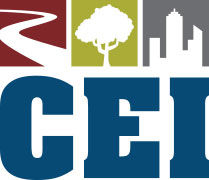
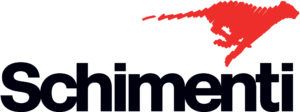


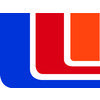
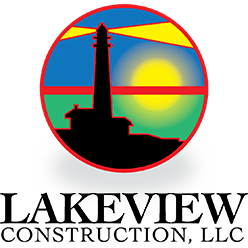
 The 2024 virtual Men’s Round Table will be held Q4, 2024, date TBD.
The 2024 virtual Men’s Round Table will be held Q4, 2024, date TBD.